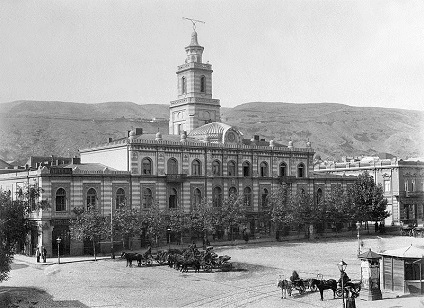What did Georgia’s first Self-Government look like?

Georgia’s National Museum is hosting an exhibition that details the establishment of the capital city’s first local government.
Unique documentary materials dating back to the late 1800s and early 1900s describe the state of the local scene when Georgia was part of the Russian Empire and the establishment of local leadership in Tbilisi.
In the 19th century, the Russian Empire occupied Georgia and the city’s responsibility lay with police and the organisation’s head.
However the local people were not happy with this and began to challenge this leadership. As a way to diffuse the public’s resistance, Russia replaced its occupation regime with a civilian government, and Georgia’s capital city Tbilisi was deemed a place of Russian self-governance and the residency of the Viceroy.

Tbilisi Self-Government Building in 19th century. Photo from wikipedia.
One component of the National Museum, the Ioseb Grishashvili Tbilisi History Museum, is currently hosting the exhibition until April 15. The exhibition is titled ‘Tbilisi Self-Government in 1875-1917’.
The Museum is inviting all people to attend the exhibition and see the rich collection of items that were handed to the authorities of the Russian Empires' first Tbilisi Municipal Museum, which describe the history of the Tbilisi Self-Government in 1875-1917.
These collections were the basis for the establishment of the Museum in 1910.
Visitors are able to see different documents and items that describe the decision making process during the capital’s elections period.
Exhibition organisers said the event allowed viewers to clearly understand the decisions made by the local government to solve problems related to utilities, water canala, paving of the streets, illumination of the city, transport, sanitary clearing of the city, health protection, problems related to education and culture and more.
At the exhibition memorial subjects of the working room of the head of the city are exhibited; the photos describing the history of development of self-government at different stages and other documentary materials, namely, the list of the honourable citizens of 1845, the first lists of elections (1870) and the decision of the first elective commission are on display within the exhibition.
Meanwhile, the same exhibition was hosted by the Sinom Janashia Museum of Georgia in 2014 and was devoted to the 140thanniversary of elections in the Tbilisi self-government
 Tweet
Tweet  Share
Share